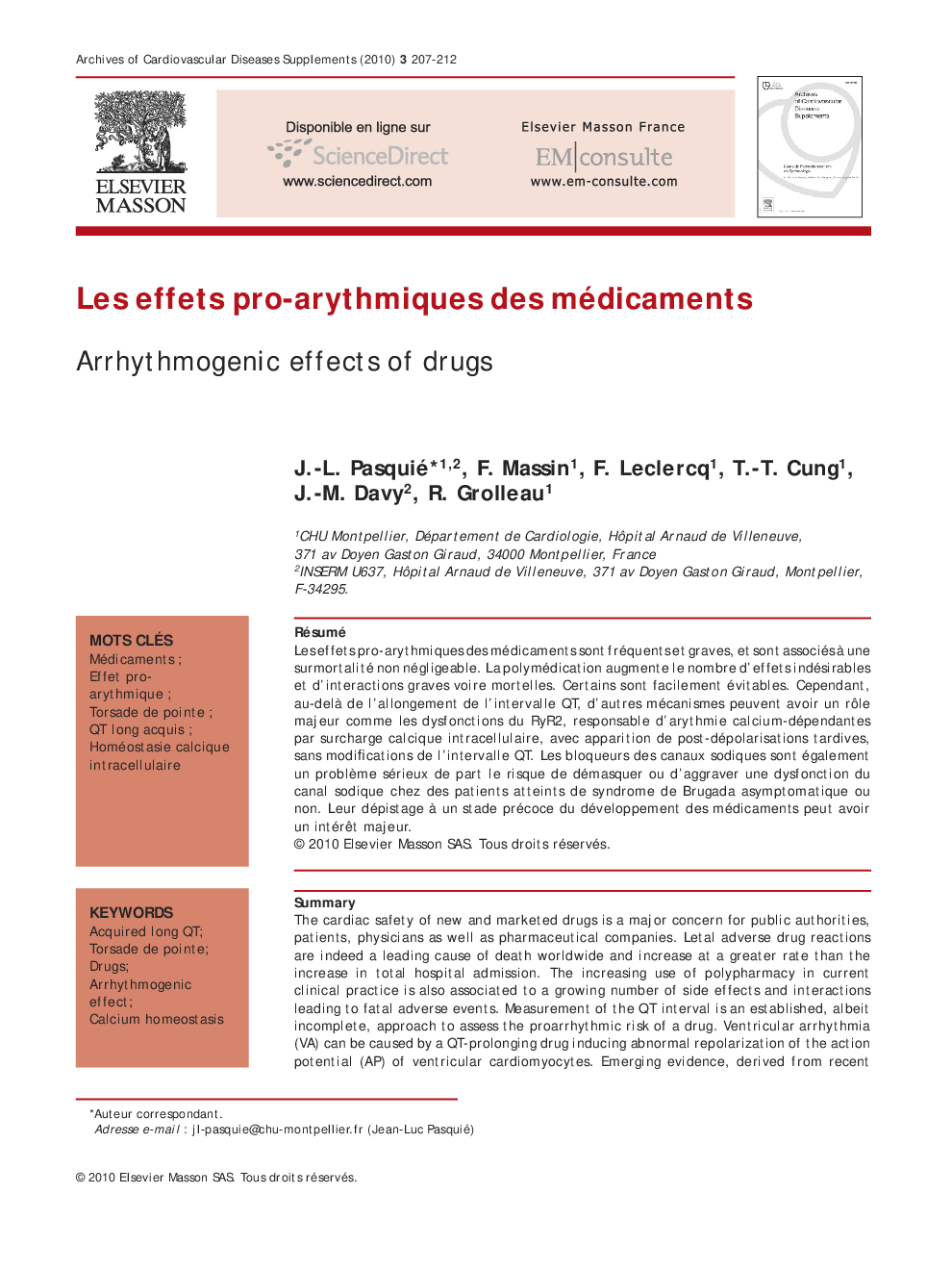| Article ID | Journal | Published Year | Pages | File Type |
|---|---|---|---|---|
| 2890940 | Archives of Cardiovascular Diseases Supplements | 2010 | 8 Pages |
RésuméLes effets pro-arythmiques des médicaments sont fréquents et graves, et sont associés à une surmortalité non négligeable. La polymédication augmente le nombre d’effets indésirables et d’interactions graves voire mortelles. Certains sont facilement évitables. Cependant, au-delà de l’allongement de l’intervalle QT, d’autres mécanismes peuvent avoir un rôle majeur comme les dysfonctions du RyR2, responsable d’arythmie calcium-dépendantes par surcharge calcique intracellulaire, avec apparition de post-dépolarisations tardives, sans modifications de l’intervalle QT. Les bloqueurs des canaux sodiques sont également un problème sérieux de part le risque de démasquer ou d’aggraver une dysfonction du canal sodique chez des patients atteints de syndrome de Brugada asymptomatique ou non. Leur dépistage à un stade précoce du développement des médicaments peut avoir un intérêt majeur.
SummaryThe cardiac safety of new and marketed drugs is a major concern for public authorities, patients, physicians as well as pharmaceutical companies. Letal adverse drug reactions are indeed a leading cause of death worldwide and increase at a greater rate than the increase in total hospital admission. The increasing use of polypharmacy in current clinical practice is also associated to a growing number of side effects and interactions leading to fatal adverse events. Measurement of the QT interval is an established, albeit incomplete, approach to assess the proarrhythmic risk of a drug. Ventricular arrhythmia (VA) can be caused by a QT-prolonging drug inducing abnormal repolarization of the action potential (AP) of ventricular cardiomyocytes. Emerging evidence, derived from recent understanding of these mechanisms and of similar mechanisms reported for heart failure (HF), suggest that diastolic Ca2+ leak from the sarcoplasmic reticulum (SR) related to RyR2 dysfunction can induce Ca2+ dependent arrhythmia. In this report, we review mechanisms underlying drug-induced arrhythmogenic effects and Ca2+ dependent arrhythmia, and, for the latter, we discuss some of the issues associated to worsening of cardiac arrhythmias.
